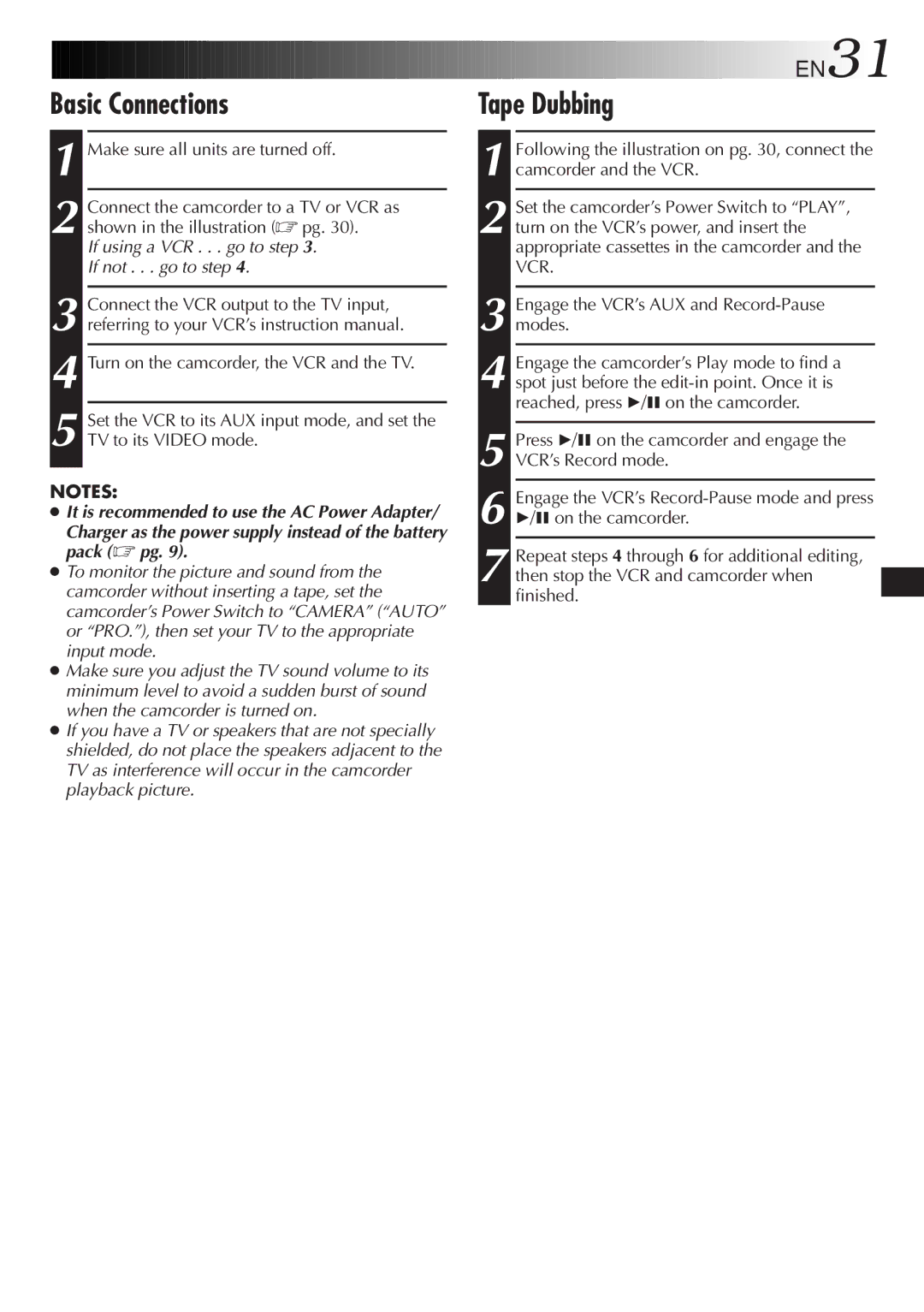
Basic Connections
1 Make sure all units are turned off.
2 Connect the camcorder to a TV or VCR as shown in the illustration (☞ pg. 30).
If using a VCR . . . go to step 3.
If not . . . go to step 4.
3
4 Turn on the camcorder, the VCR and the TV.
5 Set the VCR to its AUX input mode, and set the TV to its VIDEO mode.
NOTES:
●It is recommended to use the AC Power Adapter/
Charger as the power supply instead of the battery pack (☞ pg. 9).
●To monitor the picture and sound from the camcorder without inserting a tape, set the camcorder’s Power Switch to “CAMERA” (“AUTO” or “PRO.”), then set your TV to the appropriate input mode.
●Make sure you adjust the TV sound volume to its minimum level to avoid a sudden burst of sound when the camcorder is turned on.
●If you have a TV or speakers that are not specially shielded, do not place the speakers adjacent to the TV as interference will occur in the camcorder playback picture.
![]()
![]()
![]()
![]()
![]()
![]()
![]()
![]()
![]()
![]()
![]()
![]()
![]()
![]()
![]()
![]()
![]()
![]()
![]()
![]()
![]() EN31
EN31
Tape Dubbing
1
2 Set the camcorder’s Power Switch to “PLAY”, turn on the VCR’s power, and insert the appropriate cassettes in the camcorder and the VCR.
3
4 Engage the camcorder’s Play mode to find a spot just before the
5
6
7 Repeat steps 4 through 6 for additional editing, then stop the VCR and camcorder when finished.
